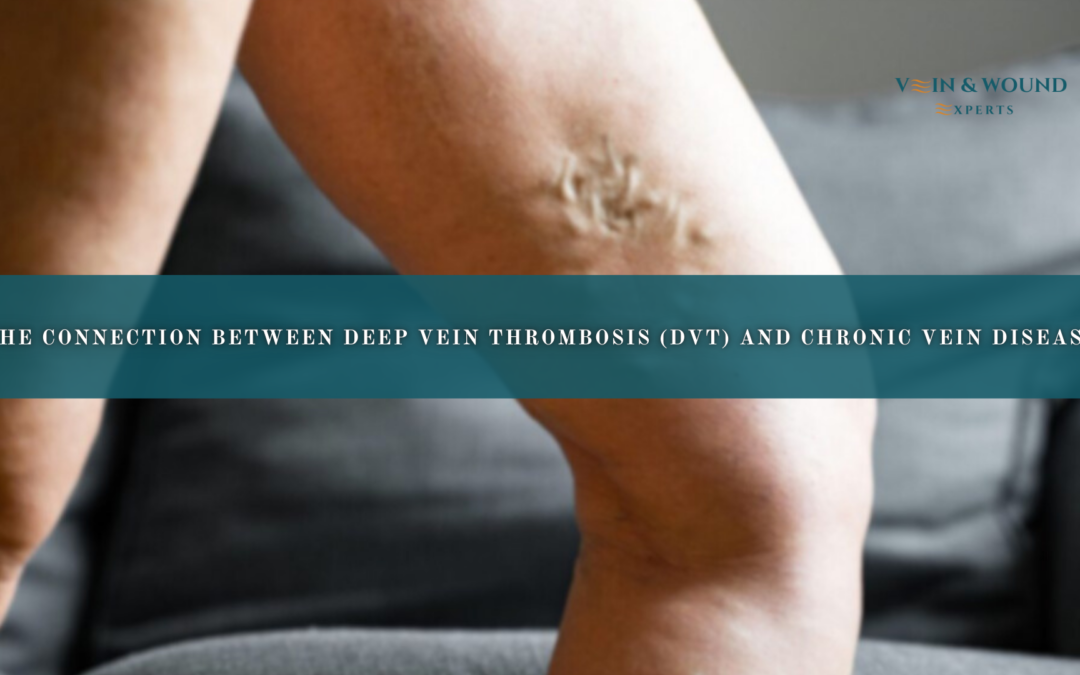Deep Vein Thrombosis and Chronic Vein Disease
🩺 The Link Between DVT and Chronic Vein Disease
Deep vein thrombosis (DVT) occurs when a blood clot forms in the deep veins, most commonly in the legs. Chronic vein disease (CVD), on the other hand, develops when the venous system becomes damaged or weakened, leading to poor circulation, swelling, and skin changes. While these two conditions may seem separate, medical research and clinical practice show that they are closely interconnected.
When a clot from DVT blocks blood flow, it can permanently damage the valves in the veins. Over time, this damage contributes to the development or worsening of chronic vein disease. Patients who experience one episode of DVT often face long-term complications that significantly increase the risk of chronic venous insufficiency.
🦵 Deep Vein Thrombosis Symptoms and Their Long-Term Impact
Recognizing thrombosis symptoms early is essential for preventing severe consequences. Typical signs include:
-
Pain or cramping in the leg, often starting in the calf
-
Swelling of the leg or ankle
-
Red or discolored skin over the affected area
-
A sensation of warmth in the leg
Unfortunately, not all patients notice symptoms right away, which can delay diagnosis. If untreated, DVT may lead to post-thrombotic syndrome—a chronic condition that mirrors many features of chronic vein disease, including swelling, skin discoloration, and in severe cases, venous ulcers.
💉 Treatment of Deep Vein Thrombosis and Chronic Vein Disease
The treatment of deep vein thrombosis typically begins with anticoagulant therapy to prevent the clot from growing or traveling to the lungs. In selected cases, minimally invasive procedures such as catheter-directed thrombolysis or venous stenting may be required.
For patients with chronic complications, therapy focuses on improving circulation and reducing symptoms. Compression stockings, lifestyle changes, and advanced vein procedures are often recommended. When managing treatment deep vein thrombosis leg, physicians also emphasize long-term follow-up care to minimize the progression into chronic vein disease.
🌍 Why Comprehensive Care Matters in California
Patients in regions like California, where lifestyle factors and genetic predispositions overlap, benefit from specialized clinics that focus on vein health. Vein & Wound Experts in Downey offer advanced diagnostic tools and personalized care, helping patients not only manage clots but also reduce the likelihood of future complications.
By addressing both immediate clot removal and long-term venous health, specialists can prevent patients from entering a cycle of recurring vein problems. This holistic approach improves mobility, reduces pain, and enhances quality of life.
🧭 Preventing Complications Before They Begin
To lower the risk of both DVT and CVD, patients should focus on proactive measures:
- Stay physically active and avoid long periods of sitting 🏃♂️
- Maintain a healthy weight and balanced diet 🥦
- Follow up regularly with a vein specialist if you have a history of clots 👩⚕️
- Use compression therapy when recommended by your physician 🧦
Preventive care plays as critical a role as medical treatment. With early intervention, the chances of developing serious chronic conditions decrease significantly.
🔑 Key Takeaways for Patients with Vein Concerns
The connection between DVT and chronic vein disease is clear: one often leads to the other. Recognizing the warning signs, seeking timely treatment of deep vein thrombosis, and following long-term care strategies are essential steps for preserving vein health.
For those looking for expert guidance, Vein & Wound Experts in Downey, California provide comprehensive solutions designed to prevent complications and improve long-term outcomes.

Andy Sharifi
Position
